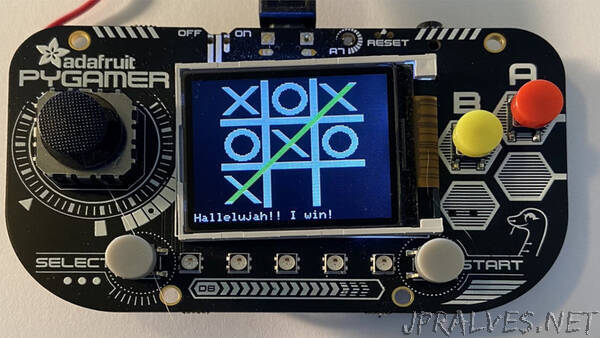
“The Adafruit PyGamer is a powerful platform for creating your own handheld games. It can be programmed in MakeCode, CircuitPython, and Arduino C++. However most of the games that have been developed for this platform have been single player games. In this guide, learn how you can attach two RF69HCW FeatherWings to the back of two PyGamer devices and use RF radio communication to construct two player games.
It’s all made possible by the TwoPlayerGame Library written in C++ using the Arduino IDE. The library provides you with base object classes that you can extend with your own custom classes that define the rules of your game. The base classes form a game engine that handles negotiation of the start of the game between the two devices, the back-and-forth transmission of moves and responses, and other housekeeping duties. This lets you focus all of your efforts on creating the game itself.
This includes some sample demonstration games “Tic-Tac-Toe” and “Battleship” that you can use as models for creating your own two player games.
The object oriented modular design of the game engine will also allow us to develop other types of two-way communication such as Bluetooth, infrared or other RF systems without needing to modify your game at all. You can simply drop in a different communication module and recompile. These other communication systems are still a work in progress, but the RF69HCW FeatherWing is fully supported now.
The sample programs provided here also run on the PyBadge which is not quite as feature-rich as the PyGamer. Notes are provided of any differences throughout the tutorial. It will not work with the PyBadge LC, a low-cost version, because it does not have a socket on the back to plug in an RF board.
The system should also be compatible with the Adafruit Clue board but will require implementation of a different communication method, using Bluetooth instead of the RFM69HCW ‘Wings.”
